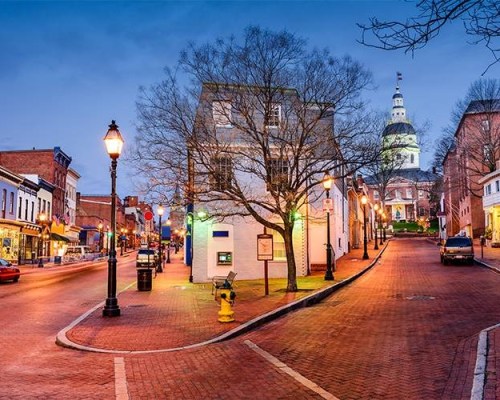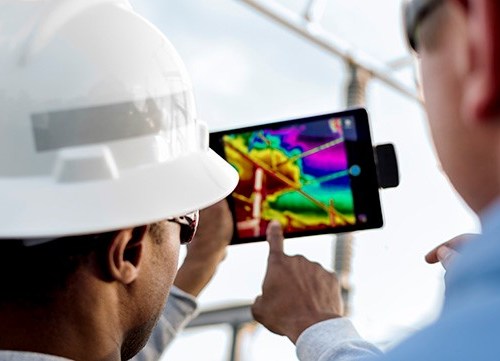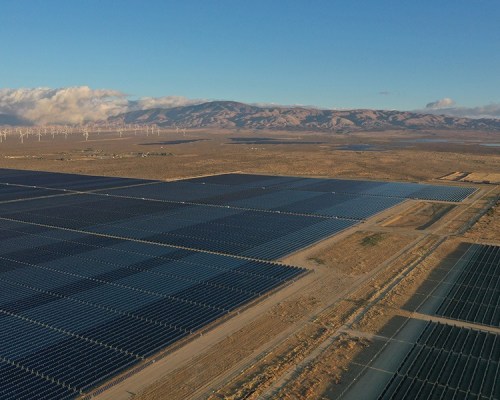Resiliency and Technology in Cities
In recent years, a growing number of municipalities across the country have explored evolving sustainable energy strategies to help better protect and strengthen critical city services. They are using smart city initiatives, new technologies and innovative financing to lead the way.
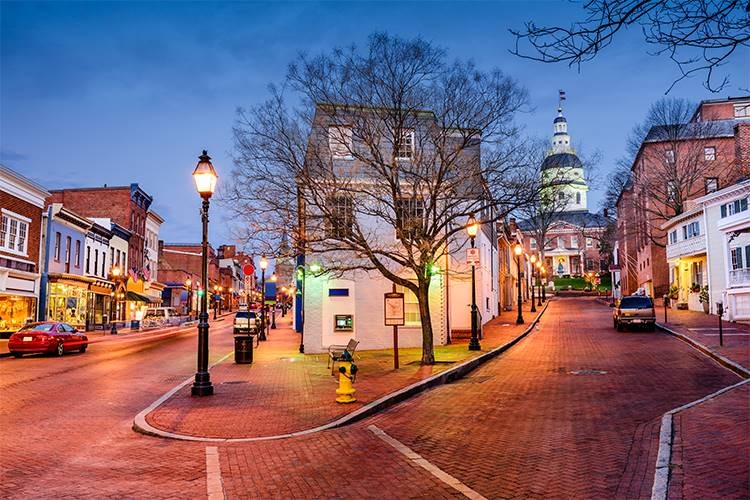
In this four-part interview, city of Greensboro representatives Jane Nickles (chief information officer), Butch Shumate (facilities manager) and Sergey Kobelev (energy management engineer), as well as Duke Energy One’s Michael Kilpatrick (key segment manager for state government, municipalities and co-ops) take an in-depth look at evolving energy strategies in municipalities. In addition to discussing the importance of resiliency and technology in cities, they share how municipalities are financing investments, COVID-19’s impact on municipality budgets and what’s on the horizon in local government.
This interview is based on Episode 9 of the Beyond the Meter podcast, hosted by Smart Energy Decisions founder John Failla. It has been edited for length and clarity.
Part 1: Resiliency in Municipalities
Downtime – whether planned or unplanned – is more than just a minor inconvenience to any organization. That’s why energy resilience, the ability to quickly recover from planned or emergency power outages, is key to successful operations.
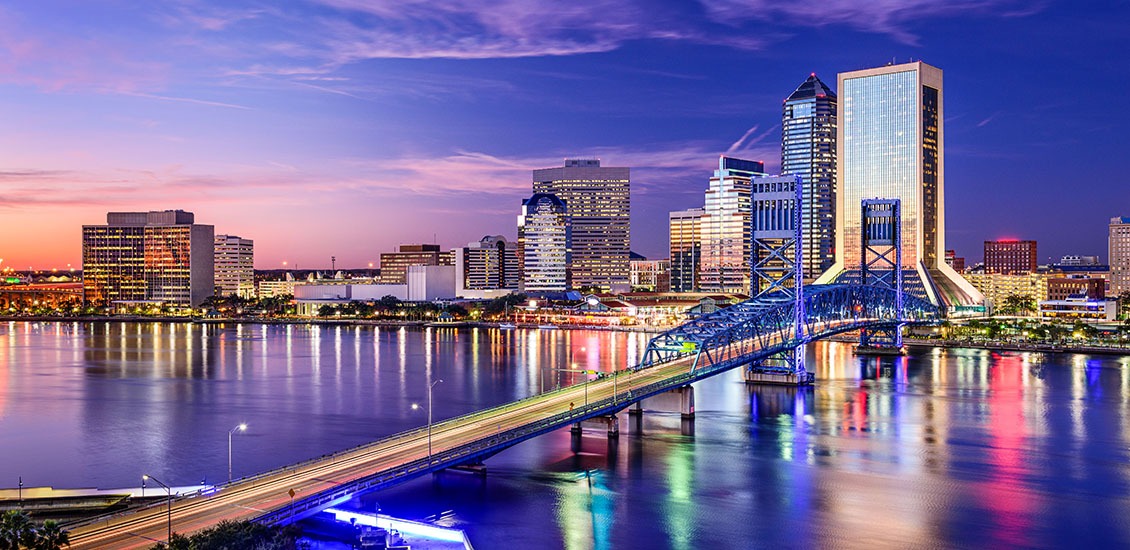
While many commercial businesses may be able to easily quantify the value of an outage for their respective organizations, it’s not quite that easy for municipalities and government agencies. Municipalities provide critical services to residents and businesses – services that help promote the health, safety and well-being of residents and can’t be quantified by loss of money.
“It could be argued that during a power outage, central services are needed more than ever. Having that reliability and resiliency is really important,” said Michael Kilpatrick. “It’s more about public safety. Think about when the power goes out and how the police officers will direct traffic. That’s so critical.”
“That’s why,” Michael added, “it’s so important for municipalities to take a closer look at their energy management strategies and make sure that it includes resiliency for their operations. With the emergence of new energy solutions during the past decade, resilient and sustainable solutions such as solar, battery storage and other technologies are now more affordable and available than ever before.”
“At the end of the day, you can’t have the smart city of the future without reliable energy infrastructure to power it,” he said.
The city of Greensboro’s evolving energy management strategy
Butch Shumate: Up until 2009, we didn’t manage any of the energy budgets. Most major departments paid their own energy bills out of their general funds.
In 2009, we entered our first guaranteed energy savings project with an ESCO and started going through facilities and looking at facility improvement measures we needed to do. The background of a guaranteed savings is that you have to maintain, and you have to have a third party look over the measurements and verifications.
We entered into the contract with an ESCO and completed 16 facility improvement measurements, from replacing several old HVAC chillers to water conservation measurements to lighting upgrades. We put solar water heating in about five fire stations, which had huge water consumption and water heating because they’re operating 24/7.
After that, we approached the finance department and said, “Can we pull all the energy budgets from these departments – fire, police, parks and recreation – and put them under our control so we can ensure we make these savings?” Part of that agreement was that we would pool all this money – facilities, engineering and inspections – to manage that energy budget. Toward the end of the budget year, we could reallocate that savings to go into more energy projects.
We are constantly looking for improvements that we can make. Many times, we can’t pay for them out of savings, but we do try to knock them out as we get to them. It basically went from no management to heavily managing the energy for the city.
The importance of resiliency in municipalities
Butch Shumate: We’re always worried about the dollar value of the impacts, but it’s more of a logistics problem if the power goes out in a facility that we don’t have resiliency for. Out of the 80+ facilities that the city has, 30 of those facilities are public safety – either fire, police or the Guilford Metro 911 call center. That’s 30 out of 80 facilities operating 24/7, so we have to have them up and running.
A prime example is when a tornado came through two years ago. It affected two of those facilities. Luckily, we already had backup generators on 100% so they were able to operate under generator power for about four days until we got power back on that side of Greensboro.
It’s not so much the dollar value impact of what the outage is, but the logistics of having to relocate.
Jane Nickles: If our data center goes down, everything shuts down. We do have a backup facility, but it would take quite a bit of time to bring it up and get everything back online – I mean, days.
So, it’s very critical that our data center stays up. Part of our IT strategic plan is to move to Cloud and we are planning to migrate everything from the data center to the Cloud.
We are starting that initiative now to be more resilient, agile and able to recover from things like outages or disasters in a very quick way. So, it’s part of our disaster recovery plan.
I’ve also been talking with Sergey about looking at how that impacts our power usage, our ability to monitor what we’re using in that data center, changes as we start migrating to the Cloud, what the savings are and how that could offset some of our costs of the Cloud infrastructure. It’s part of our strategic plan, it’s part of our smart city plan, and part of our way of being more resilient.
The role resiliency plays in future city of Greensboro projects
Sergey Kobelev: With most of the projects we’ve completed, they have resiliency in mind as a byproduct since we have limited resources.
For example, we are working with a manufacturer of electric buses. We don’t have a full plan right now, but we are working on ways to use the buses, not only as vehicles and public transportation, but also as batteries on wheels. In case of a natural disaster, we could bring them to first responders.
We are using our solar photovoltaic (PV) system to charge these buses. A 100-kilowatt (kW) system could charge 60-kW buses for free. So, besides saving money and diesel fuel, we are providing an independent source of energy for these buses, which we could deliver where we want.
I could continue with examples, but most of our projects have resiliency in mind because it looks like we have quite drastic changes in the climate and our way of living.
The intersection of resiliency and a growing interest in sustainability
Michael Kilpatrick: I think there’s a balance to be had there. An example is what’s going on in California. California has a perfect storm of extreme weather – not only heat in California but heat in the surrounding areas. You’ve got a transitioning grid that’s going more toward renewable energy, and it sounds like there has been a high number of units offline but more than would be this time of year.
While it’s hard to say that renewables are directly tied to some of the blackouts they’re having in California, it does highlight the considerations. As we pursue a more sustainable future, we need to make sure the energy resources they rely on can also be resilient. It’s those types of applications, and that line of thinking, that I think is going to be important to consider.
Another thing that will probably be an industry trend – and California always ends up being one of the leaders in this – is looking at microgrids and how microgrids can help balance the needs of load and generation to insulate you from some of the larger issues the grid may face.
Right now, California is sorting out some of the regulations that will define policy around the value of microgrids and how that works in a commercial space. It will be something to keep an eye on. When one state determines a policy, it’s interesting how other states like to copy that policy and create some best practices from it.
Part 2: Smart Cities & New Technologies
Being a “smart city” – a city that uses a networked intelligence system to provide data, service and safety to their communities – can mean something entirely different for every municipality, depending on their goals.

Some cities are focused on using technology to enhance city planning efforts while others may be focused on using technology to strengthen public safety.
For the city of Greensboro, economic development opportunities were at the top of their list when making the decision to become a smart city. And bringing in fiber was just the first of a series of new technologies employed by the city during the past few years.
“To have a smart city, you’ve got to have fast, high-speed networks,” Jane Nickels said. “Our No. 1 priority was bringing fiber into Greensboro, getting that foundation and that platform in place to build smart city technologies.”
The city of Greensboro’s Smart City Journey
Jane Nickles: We started our smart city journey about five or six years ago with the advent of Google fiber in the area. Google was going to Charlotte and Raleigh. We sit right in between Charlotte and Raleigh, and we didn’t have any prospects at that time of getting fiber in the city.
We started advocating for fiber in Greensboro and began a fiber initiative, which became a regional initiative. We started talking about how we could use these high-speed networks and technology to be more efficient and deliver better services – and that was the birth of our smart city initiatives.
We also have quite an extensive amount of city-owned fiber that connects our traffic signals – all of our facilities. Leveraging that and bringing new connectivity into the city was where we started.
The city of Greensboro’s Kiosk program
Jane Nickles: Kiosks were something that we started talking about in 2017. The CIO from Kansas City did a presentation (at a smart city conference) on the kiosk they just rolled out. We were very interested in what they had done and made the connection of how that could tie into what we were trying to do.
Several of us went to Kansas City a couple of times and looked at the kiosk, met with them, looked at how the kiosk was being used and how they tied into downtown transportation on the trolley – which is exactly how we wanted to use the kiosk.
So, that started our conversations with Smart City Media and Duke Energy [One], and how the first phase of our kiosk deployment would go in areas we were going to target. And with the intention of eventually tying this into a microtransportation system downtown with electric shuttles, we started talking to some companies about doing that.
Our project was great. We had Duke Energy [One] and Smart City Media as partners. Everyone got excited about it. Our local businesses wanted to be on the kiosk. Our communications team was putting together content to put on the kiosk, so we had a very successful deployment. We had a big news media event, and a lot of people came out for it.
It was really exciting because we launched the kiosk right at the start of the North Carolina Folk Festival downtown. They got a lot of use, a lot of curiosity and people using them. We’ve used them several times for information about downtime events.
We get data around the usage of the kiosk that we can use to evaluate how people are using them – what kinds of things they were touching on; which kiosk was the most popular kiosk.
Up until March and COVID-19, they were getting a lot of use. Then, of course, things shut down. But they were used to provide information about the virus early on. We were posting information about what COVID-19 is and precautions to take.
How the city of Greensboro is pursuing fleet electrification
Butch Shumate: Facilities, we’re not the driver behind the vehicles. We’ll easily end up being brought in on a project when they pursue it, like electric buses with transportation. They brought us into it, and we started looking at facilities and how they wanted to offset it with solar panels.
We worked with them putting in the charging stations. Now our equipment service division is looking at electrifying all the pool vehicles that are sent around different towns. Departments that don’t have vehicles assigned to them check these out for their trips across the city.
We’ve already put the infrastructure in the downtown parking lot, our flat-surface lot. I worked with Duke Energy [One] again to set another transformer there to feed the charging stations.
We’re also on the new parking decks that the city is in the process of building. We’re putting solar panels on those decks because they will have charging stations for electric vehicles in them as well. So that’s basically where we’re looking to put the infrastructure in – to help with the electric vehicles and the charging stations and getting them ready and trained out.
The role energy service companies play in the electrification of municipalities
Michael Kilpatrick: With a lot of cities, they look to buy the vehicle first. Then, let’s figure out what the fuel is going to be and how to manage that.
I think as we transition more toward EVs – certainly five, 10, or 15 buses at a time or pool vehicles at a time is one thing. But the more vehicles you have, the more energy you’re going to be required to procure to fuel those vehicles as opposed to diesel or gas you’ve used in the past.
That brings in a lot of things to consider: Am I going to get this power from the utility? Is the location of the depot able to take that additional power? Do I want to generate power myself? Do I want to put solar panels out there or battery storage or a generator to back up that power? How am I going to manage that load? How am I going to charge the vehicles? Am I going to plug everything in at once, or am I going to put a fast charger or pantograph charger that’s going to charge everything for 45 minutes and enter cycle charge and get it through the rest of the day?
What energy services can do is help you work through those solutions and figure out the best way to optimize that deployment. Not only to do it in the most economical way but to meet some of the larger city goals. You’re adding a lot more things to the equation rather than filling up the gas tank.
Part 3: Financing and Moving Projects Forward
Making the transition to a smart city doesn’t happen overnight. It often requires collaboration with internal and external stakeholders, buy-in from leadership and innovative financing models.

For the city of Greensboro, one of the most important steps when moving projects forward is collaborating with partners that work outside of city government. That’s required some departments, like IT, to take on a different role than it had in the past.
“We’ve shifted to being more strategic in these smart city initiatives to working with the chamber of commerce, partners in the community, and businesses,” Jane said. “It’s really been a shift for us in IT in the way that we interact with the city’s goals and strategies.”
In doing so, the city of Greensboro has been able to break down silos in their community and work toward achieving the same goal.
And for city staff, the next step to achieving those goals meant prioritizing and financing these investments, particularly during a time of limited and strained resources.
How the city of Greensboro prioritizes investments
Jane Nickles: I have no budget set aside for smart city projects, so I have to look for other departments and partners that will fund a project. A lot of times, it’s a matter of knowing what’s going on in your city, who is doing what, what projects are scheduled to launch, and how those projects might play into a smart city initiative.
I look at what has already been funded or approved for funding. It might be a redevelopment project or something that we can collaborate on and leverage to bring smart city technology or a smart city initiative to that project. Also, not only internally with departments, looking at what’s happening externally in the city.
For example, we have internet service providers that are putting fiber in the city for their networks and for 5G. At one particular project where fiber was being built between Greensboro and Winston-Salem, we asked if we could leverage that to start connecting cities and a fiber-connected government network. They gave us the fiber to do that. Sometimes, it’s just a matter of asking to see what you can get.
COVID-19’s impact on municipal and energy budgets
Butch Shumate: COVID-19 definitely had an impact on budgets – the overall budget and not just the energy budget. As we looked at the 2021 fiscal year, I ended up having to take all my capital improvement budget to help balance the city’s budget, so we lost the capital improvement budget on the front end. If things do seem to improve and tax dollars come back in, I have been promised that I will be the first one funded to get some of these projects going back out, but that’s where it’s at.
As far as the energy goes, it has definitely had an impact there. If you look at April to June of this year (2020), with the initial lockdown and COVID-19 restrictions in place, we had a lot of staff across the city that were working remotely.
We had savings of about 16% in our energy budget because of not being up to full speed. That’s the total energy for the city. If you look at the ones we control in our energy budget in house, we saved about 12% of that energy money. We didn’t get to realize the savings because of the tax impact and the dollars being down, so that went back to the general fund. The city, overall, realized that savings and that helped balance some of it as well.
The rise of Energy as a Service
Michael Kilpatrick: I think as we look through our commercial business throughout the United States, the energy as a service model is one of our core tenants. I think the benefits are when you can take out not requiring capital expenditures – when you don’t have the budget to do projects – and now you can have someone come in and provide the capital themselves. Transition it from a capital expense to an operating expense – and a predictable one at that.
I think that provides a lot of value. I think the other thing that energy as a service can provide is the expertise. I think one thing we’re going to start to see with cities if we haven’t seen it already is, unfortunately, there are going to be folks furloughed and there are going to be folks laid off.
What happens when we do that is, we lose expertise and start pushing these projects. That’s where the energy as a service companies provide a couple of different functions, not only removing the capital requirement but also bringing in the expertise to operate and maintain it.
We’re seeing as a service happen with more than just energy. You’re seeing software as a service offerings pop out there. I saw something the other day about fiber as a service. Again, it’s filling that expertise gap and removing that capital expenditure gap. It’s something that we’re pursuing and happy to participate in, and we do see quite a bit of opportunity.
Part 4: What’s Next?
Most municipalities across the country are starting to consider sustainability.
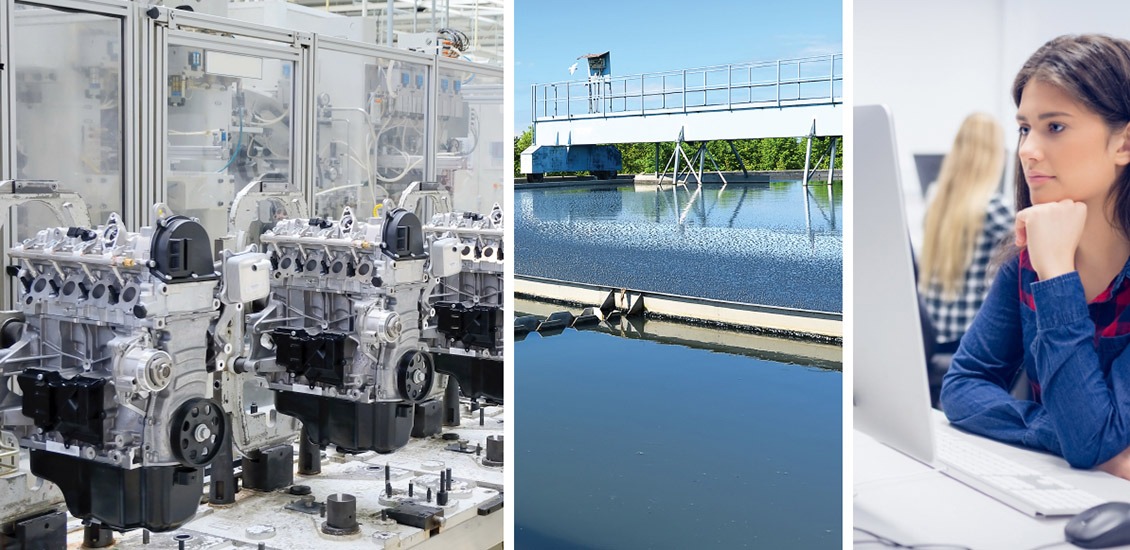
There are more than 150 cities that either have a renewable energy goal or a carbon reduction goal, Michael said, and that number is almost certainly expected to grow in the future.
For example, consider electric fleets and how the role they can potentially play in a municipality’s carbon reduction goals.
“You put all the renewable energy in, you own the grid and clean up your energy usage, but the vehicles end up being some of the bigger CO2 emitters within a city,” Michael added. “So as EVs become more prevalent, they could play a big role in carbon reduction. That’s not only with the buses, that’s also with the fleet vehicles and your everyday vehicles for your city employees as they get converted to EVs. That can make a big difference.”
Other trends to look at in the future is data, which can help drive efficiencies in municipalities. And using that data, Michael said, can hopefully help you meet sustainability goals while providing better outcomes for our cities in the future.
Emerging energy priorities for the city of Greensboro
Jane Nickles: One of the things that has emerged as a priority, because of COVID-19, is connecting an under-connected population. When schools closed, children relied on being able to connect remotely and educate online.
We have a population that’s very disadvantaged as far as being connected. We realized there’s this population that does not have adequate internet connectivity to be able to do these kinds of things online. So, addressing that is one of the things we’ve already started working on.
At some point, I think this needs to be our next utility: internet. We’ve started working on that and there’s also been a collaboration with different partners in the city, Guilford County Schools, the universities, and the new Technology and Data Institute. That’s high on our list right now.
We’re also launching a program with US Ignite, and Segra is our sponsor on that program. Segra has one of the largest fiber networks on the East Coast. That is going to be around innovation and connectivity, connecting the digital divide. But also, igniting this innovation district in Greensboro that has started to emerge and taking that to the next level – tying that in with what we’re doing on Gate City Boulevard and many of the things that the university is doing around data and analytics. We’ve got a lot going on. I think 24 months from now, you’ll see a lot of smart city interesting things happening here.
COVID-19’s impact on the city of Greensboro’s energy management program
Butch Shumate: Because of COVID-19, we have a lot more buildings and a lot more staff that are working remotely – which led us to having facilities that are dark for longer periods of time.
We’re in the process of starting to upgrade our building automation system – going back in some of the outdated controls that we don’t have in remote facilities to get a look at them.
We have some two-story buildings with a limited number of people there. We’re going to try to devote sections of that building where we can throttle back the HVAC, the air handlers, keep the lights off if they’re dark, and reprogram them where they’re not on their standard format. And that’s short term.
When the pandemic first started, we were working with Jane’s group on expanding their footprint in city hall to take up more space and make it more user-friendly. The pandemic hit, COVID-19 hit, and with the restrictions of people working remotely, they found out they may not need as much floor space. They may not need people in these facilities.
It’s a balance that we’re going to be looking at, probably, over the next couple of years. How much brick and mortar did the municipality really need? As they expand the IT and get it to where people can work remotely from home, I think we’re going to see a lot more transitioning to that. It’s more efficient for them to be at home, especially with school-age kids and school being remote now. That’s going to be a delicate balance as we go through and start looking at our energy consumptions versus the number of people that are occupying facilities.
City of Greensboro’s energy strategies over the next two years
Sergey Kobelev: Speaking about our view of incoming technologies, we’re not waiting until something will show up on the horizon.
We are now looking at using proven technologies. We don’t want to jump on the fresh and not-proven technologies. We waited on a project for solar power for five years, and during these five years, the cost of the work changed six times. I think postponing implementation of some new technologies could save us a lot of money.
But, at the same time, we’re looking at the new technologies, emerging technologies like fuel cells. We are speaking about the electric vehicles. We are seriously looking at the fuel cells development and kiosk-based solar panels. We are expecting even better efficiency from there. We will not hesitate to implement that as soon as numbers are right.
Butch already mentioned that we couldn’t expect full financing this year, at least. So, what we’re starting to do is, we started to talk to the developers about trial versions of their technology. Just to check how it works, and I hope that we will implement some thermal spray technology before the end of this year. We don’t know if we can do this, but we are speaking with developers of the technologies. The rest of the Christmas list this year is limited with money, which are leftovers from our energy fund that we hope to obtain.

